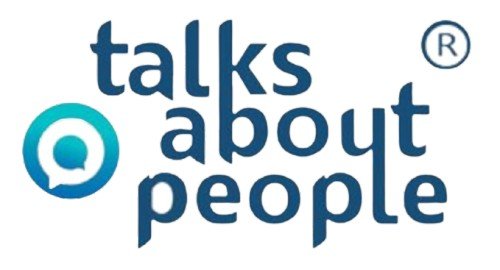In a world where strategy execution and organisational agility define success, companies are embracing a leadership-first hiring mindset. This approach acknowledges that every hire has implications far beyond the role itself. When you prioritise leadership qualities at all levels, you set the tone for culture, performance and long-term growth.
Traditional hiring models treat talent acquisition as a transactional process: advertise, screen, hire, onboard. But in a leadership-first era, hiring becomes strategic. You are not only hiring to fill a gap but to amplify vision, shape culture, and build resilience. Leadership-first hiring means bringing people on board who will lead change, inspire teams and adapt in the face of disruption.
Why Leadership-First Hiring Matters More Than Ever
The business environment is evolving at speed. Disruption, digital transformation, hybrid work patterns and shifting employee expectations make it essential for organisations to be led by people who can navigate change. In this context, leadership-first hiring wins over simply filling seats. Leaders aren’t just executors, they are catalysts.
When companies adopt leadership-first hiring they recognise that one individual can influence hundreds of others. A leader’s mindset shapes how decisions are made, how conflicts are managed, how innovations are embraced and how values are lived. This is why getting the hire right matters so much. A misaligned hire can stall momentum, erode morale and slow growth. By contrast, a strong leadership-focused hire can accelerate transformation, reinforce purpose and sustain performance.
What Leadership-First Hiring Looks Like in Practice
At its core, leadership-first hiring shifts the focus from credentials and experience alone to leadership potential and cultural fit. Here are key elements:
- Define Leadership Outcomes: With leadership-first hiring you articulate what success in the hire looks like three to five years out: leading change, developing talent, championing culture.
- Behavioural and Situational Evaluation: Instead of trusting only what someone has done, you assess how they lead: how they respond under pressure, influence others, handle ambiguity and collaborate.
- Adaptability and Learning Agility: The future will favour those who can pivot, learn and unlearn. Leadership-first hiring emphasises mindset over mastery.
- Culture and Values: Leadership is about how you do things, not just what you do. Hiring with leadership-first intent looks at character, integrity, emotional intelligence and the ability to build trust.
- Onboarding and Integration: Effective leadership-first hiring doesn’t stop at the job offer. Onboarding must enable the leader to build relationships, understand strategy, align with purpose and start delivering from day one.
The Business Case for Leadership-First Hiring
Organisations that adopt leadership-first hiring reap multiple benefits. First, they increase the likelihood of sustained performance. When you hire someone who leads well rather than someone who just does well, you build resilience. Second, you protect culture and continuity. A leader who aligns with values reinforces trust, commitment and engagement. Third, you prepare for the unknown. When the business world shifts, your leadership hires are equipped to navigate volatility rather than be overwhelmed by it.
By contrast, hiring without a leadership-first mindset can leave organisations vulnerable. You may attract someone with the right résumé, but wrong mindset. The hire may deliver for a while and then stumble as the environment changes. You may end up spending time and money managing the consequences rather than building momentum.
Trends Supporting Leadership-First Hiring
Several trends reinforce why hiring will increasingly become leadership-first:
- Organisations are shifting to skills-based and competencies-based hiring, placing less weight on credentials and more on what someone can bring tomorrow.
- Leadership roles now require emotional intelligence, adaptability, digital literacy and cultural fluency, qualities beyond technical mastery.
- Hiring decisions are becoming more strategic and integrated. Hiring leaders early and purposefully aligns with broader transformation rather than treating talent acquisition as an operational task.
How to Shift to a Leadership-First Hiring Approach
Making the transition to leadership-first hiring requires intention and change. Here’s a roadmap:
- Reframe Hiring Briefs: Instead of listing tasks and responsibilities, define what leadership impact you expect. What change, growth or culture shift should this person contribute to?
- Structure Assessment for Leadership Potential: Use interviews, simulations and 360-degree feedback to evaluate leadership competencies, such as influencing up and across, making strategic decisions, building teams.
- Involve Multiple Stakeholders: Leadership-first hiring involves not only HR and the function but also peers, direct reports and internal culture champions. Multiple perspectives reduce bias and increase fit.
- Onboard as a Leader: Provide clarity on strategic priorities, connect the hire to key stakeholders, integrate them socially and visually reinforce the leadership role. Make it clear that they are a leader, not just a manager.
- Measure Leadership Impact: Over time monitor outcomes like team engagement, turnover, innovation rates, culture indicators, strategic initiative success. Leadership-first hiring is validated when you see the downstream impact.
- Cultivate Leadership Pipeline: Leadership-first hiring is not only about external hires but also internal bench strength. Identify and develop people with leadership potential so you have options and continuity.
Avoiding Common Pitfalls
Even with leadership-first intent, organisations can stumble. Avoid these mistakes:
- Focusing solely on past achievements rather than future potential.
- Confusing technical brilliance with leadership brilliance.
- Neglecting cultural fit or values alignment.
- Overlooking transition and integration.
- Failing to follow through.
Final Thoughts
The hiring landscape is moving from transactional to transformational. In this new paradigm, leadership-first hiring is not a boutique practice reserved for the C-suite, it is a strategic imperative for all key roles. Organizations that build with leadership at the core position themselves to lead markets, nurture culture and endure change. By shifting to a leadership-first mindset your talent strategy becomes a lever for growth, not just filling roles.
Partner with Talks About People (TAP) to build a leadership-first hiring strategy that strengthens your talent pipeline, aligns culture with capability, and ensures every hire drives long-term success.
Connect with us today!

